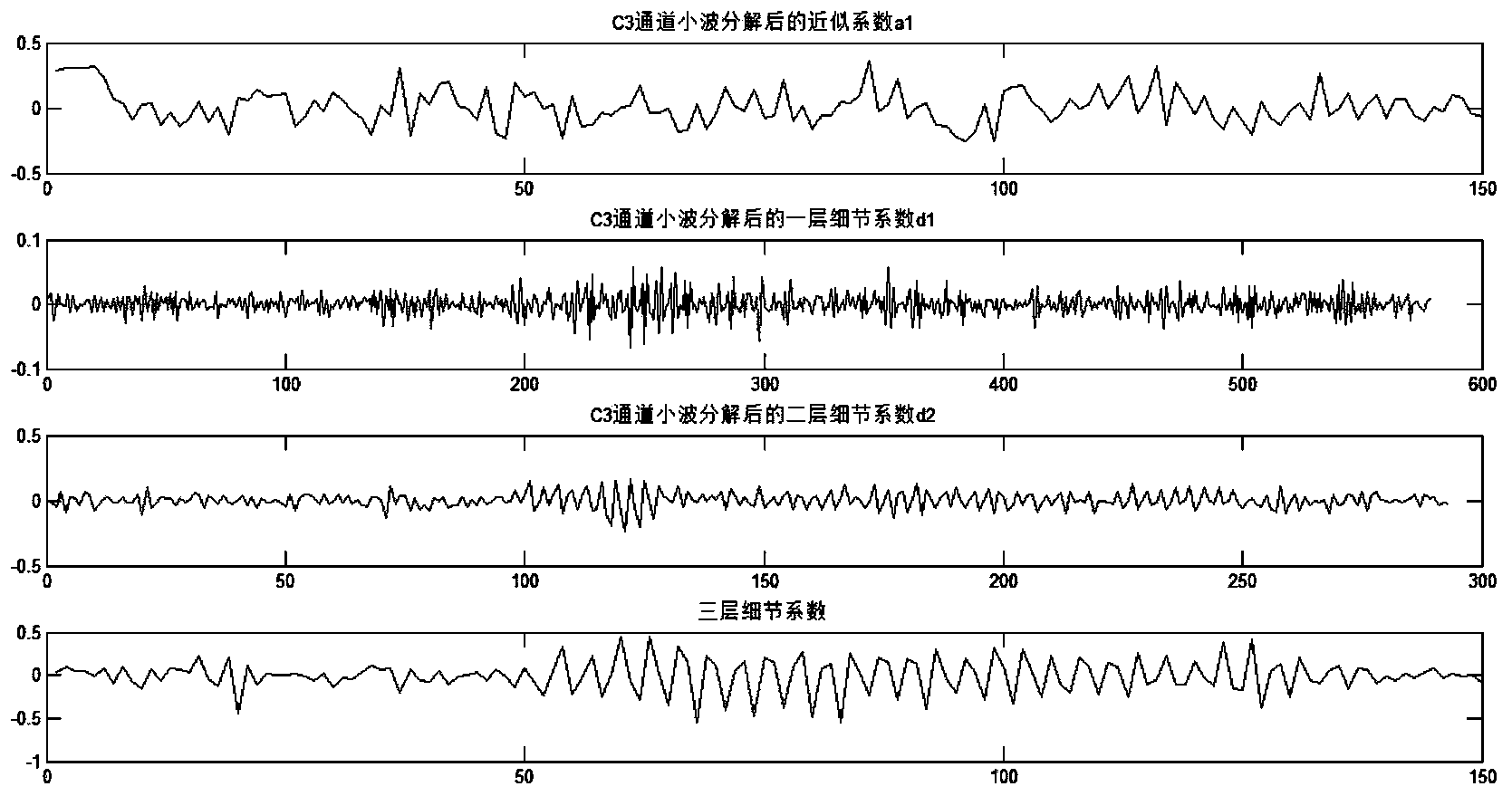Electroencephalogram signal denoising method based on self-adaption threshold processing
An adaptive threshold and EEG signal technology, applied in the fields of application, medical science, sensors, etc., to achieve the effect of reducing the root mean square error and improving the signal-to-noise ratio
- Summary
- Abstract
- Description
- Claims
- Application Information
AI Technical Summary
Problems solved by technology
Method used
Image
Examples
Embodiment Construction
[0015] The present invention will be further described below in conjunction with accompanying drawing.
[0016] The present invention comprises the following steps:
[0017] Step 1. Select the appropriate wavelet basis function, confirm the decomposition level j, and decompose the noisy EEG signal to the j level, and obtain the corresponding wavelet decomposition coefficient w j,k .
[0018] Step 2. Calculate the Donoho threshold of each decomposed subspace, which is the key to the wavelet threshold processing algorithm. It is necessary to select a threshold function and an appropriate threshold for denoising.
[0019] Step 3. Reconstruct the low-frequency coefficients and the processed high-frequency coefficients to obtain the EEG signal after denoising.
[0020] The specific steps for determining the wavelet decomposition level j in step 1 are as follows:
[0021] (1) The wavelet basis function db4 is selected to decompose the original EEG signal in 2 and 3 layers respect...
PUM
 Login to View More
Login to View More Abstract
Description
Claims
Application Information
 Login to View More
Login to View More - R&D
- Intellectual Property
- Life Sciences
- Materials
- Tech Scout
- Unparalleled Data Quality
- Higher Quality Content
- 60% Fewer Hallucinations
Browse by: Latest US Patents, China's latest patents, Technical Efficacy Thesaurus, Application Domain, Technology Topic, Popular Technical Reports.
© 2025 PatSnap. All rights reserved.Legal|Privacy policy|Modern Slavery Act Transparency Statement|Sitemap|About US| Contact US: help@patsnap.com



